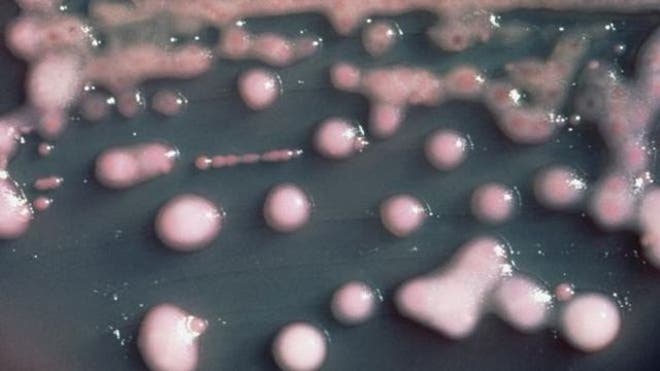
When Dr. Stuart Levy, professor of medicine at Tufts University School of Medicine, first sounded the alarm about antibiotic use in livestock back in the late 1970s, U.S. health officials and the Department of Agriculture (USDA) turned a deaf ear.
Warning that the excessive use of antibiotics in livestock was “naïve and cavalier,” Levy predicted that the practice would result in antibiotic-resistant superbugs that could pose a dangerous threat. Despite a significant body of science supporting his concerns, the USDA, which functions as the promotional board for the meat and dairy industries, did nothing.
Today, Levy’s nightmare scenario has come to pass, and still U.S. officials are failing to address the ominous hazards of ongoing antibiotic use in livestock. Even now, when a direct connection between the use of antibiotics in livestock and the proliferation of super germs is well established, the USDA is failing to act, choosing instead to err on the side of meat industry profits.
In 1949, Dr. Thomas Jukes, a researcher for the American Cyanamid Corporation, discovered that feeding animals small doses of the antibiotic chlortetracycline caused chickens and piglets to gain 10 to 15 percent more weight than normal. This remarkable discovery gave livestock producers a short-cut to higher livestock profits while saving on feed costs. Within a few short years, “subtherapeutic” doses of antibiotics were being routinely administered to poultry, hogs and cattle.
Not only did the antibiotics cause animals to gain weight more quickly, but they also helped to prevent infection. This meant that animals could be kept in more crowded spaces with less risk of infectious disease. The use of antibiotics allowed for what today is known as factory farming of livestock.
According to the Union of Concerned Scientists, approximately 70 percent of all antibiotics sold in the United States are used on healthy livestock. Globally, about half of the antibiotics produced are not used to improve human health, but for use in livestock.
When animals consume antibiotics on a regular basis, they develop antibiotic resistance. Consequently, when we eat meat from animals fed antibiotics, we develop antibiotic resistance as well. Meat does not contain antibiotics, but meat tissue imparts plasmids – b bits of genetic material – that transfer antibiotic resistance to humans. The result? Resistance to antibiotics in humans. Thus, the number of superbugs that do not respond to antibiotics is growing, and more and more people cannot be helped by these once miracle drugs.
Each year in the United States, approximately two million pounds of manure produced by livestock contaminate groundwater and soil. As early as 2002, the U.S. Geological Survey reported antibiotics in 48 percent of streams tested nationwide. Almost half of the streams tested were downstream from agricultural operations. This widespread contamination of soil and water increases the risk of antibiotic resistance in humans. And this means that we are prime targets for a global pandemic of supergerms.
In 1998, the European Union took a strong position on antibiotics, banning the use of these drugs for growth promotion in livestock. This has resulted in a steady decrease in antibiotic resistance in livestock and in humans. As early as 30 years ago, the FDA attempted to ban the use of subtherapeutic doses of antibiotics in livestock, but the move was crushed by pharmaceutical and farming lobbyists. The USDA, maintaining a pro-profits position relative to the livestock industry, has failed to budge on the issues of antibiotics in livestock production, despite ominous warnings from health officials around the world, and an increasing number of superbugs.
So where do we stand? Potent and lethal bacteria like NDM-1, MRSA, Clostridium difficile, Pseudomonas aeruginosa, and Klebsiella pneumonia do not respond to most drugs. These once life-saving medical agents are useless in an increasing number of cases. As long as animals for human consumption are fed massive quantities of drugs, this trend will continue.
Eating certified organic meats will help to reduce the amount of plasmids you consume, but many germs out there are already dangerous and drug-resistant, so this may actually do little good. Taking health precautions, such as thoroughly washing your hands and keeping away from others who are sick, will help. However, germs are everywhere, on virtually all handles, railings, and public fixtures – from gas pumps to restaurant salt shakers. Unless you wear a biohazard suit or live in a sterile environment, you are exposed to germs on a constant basis.
In the instance of antibiotic use in livestock and the promotion of lethal pathogens, individual behavior is less effective than policy change. As Levy and other health officials have warned, either the practice of feeding antibiotics to livestock must come to an end, or the consequences could be dire.
Chris Kilham is a medicine hunter who researches natural remedies all over the world, from the Amazon to Siberia. He teaches ethnobotany at the University of Massachusetts Amherst, where he is Explorer In Residence. Chris advises herbal, cosmetic and pharmaceutical companies and is a regular guest on radio and TV programs worldwide. His field research is largely sponsored by Naturex of Avignon, France.




0 comments
Post a Comment
I will like to hear your comments. Please leave a comment below